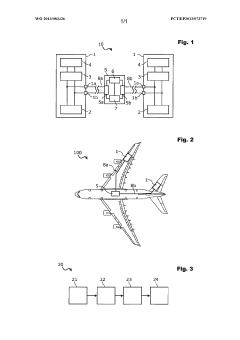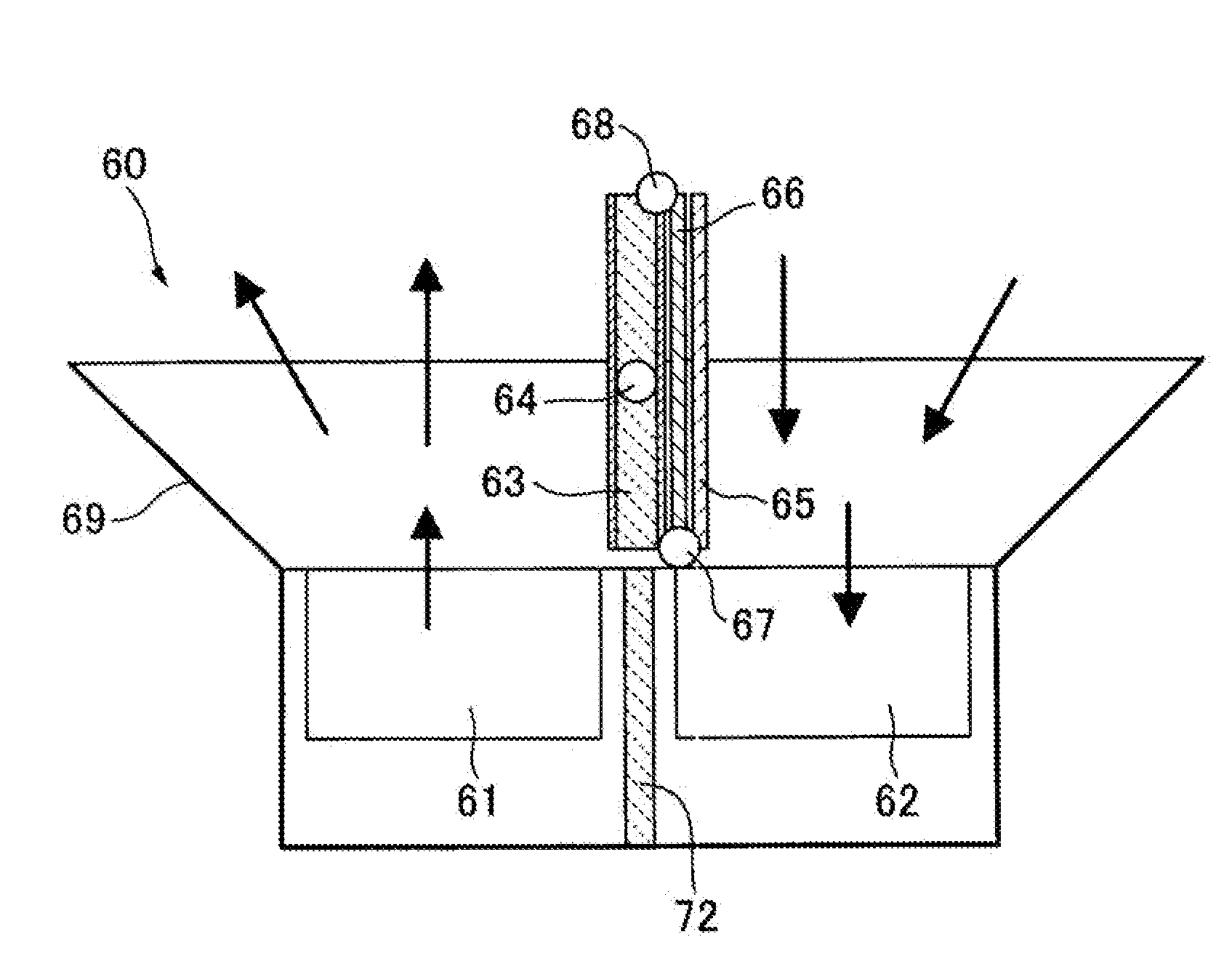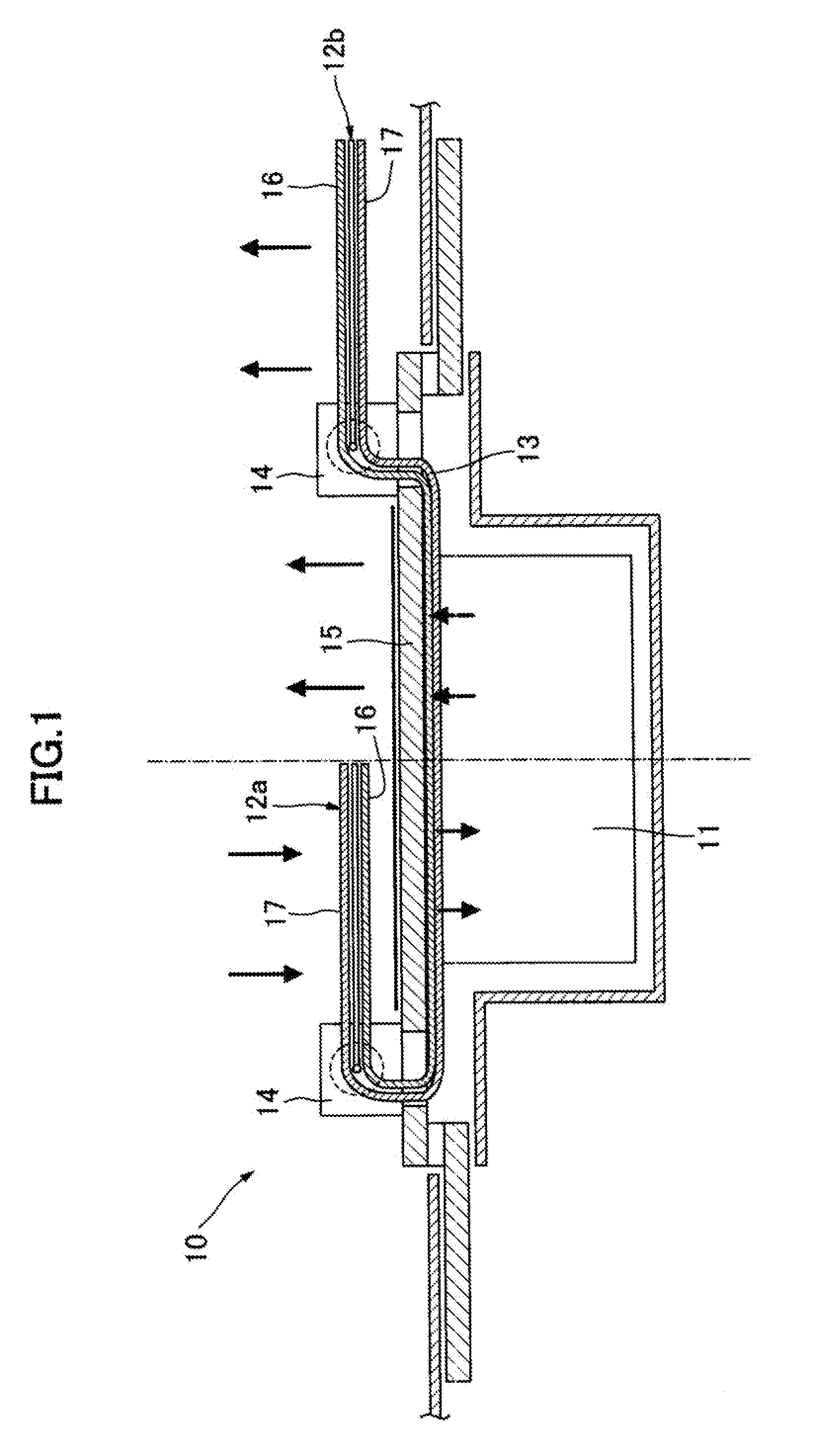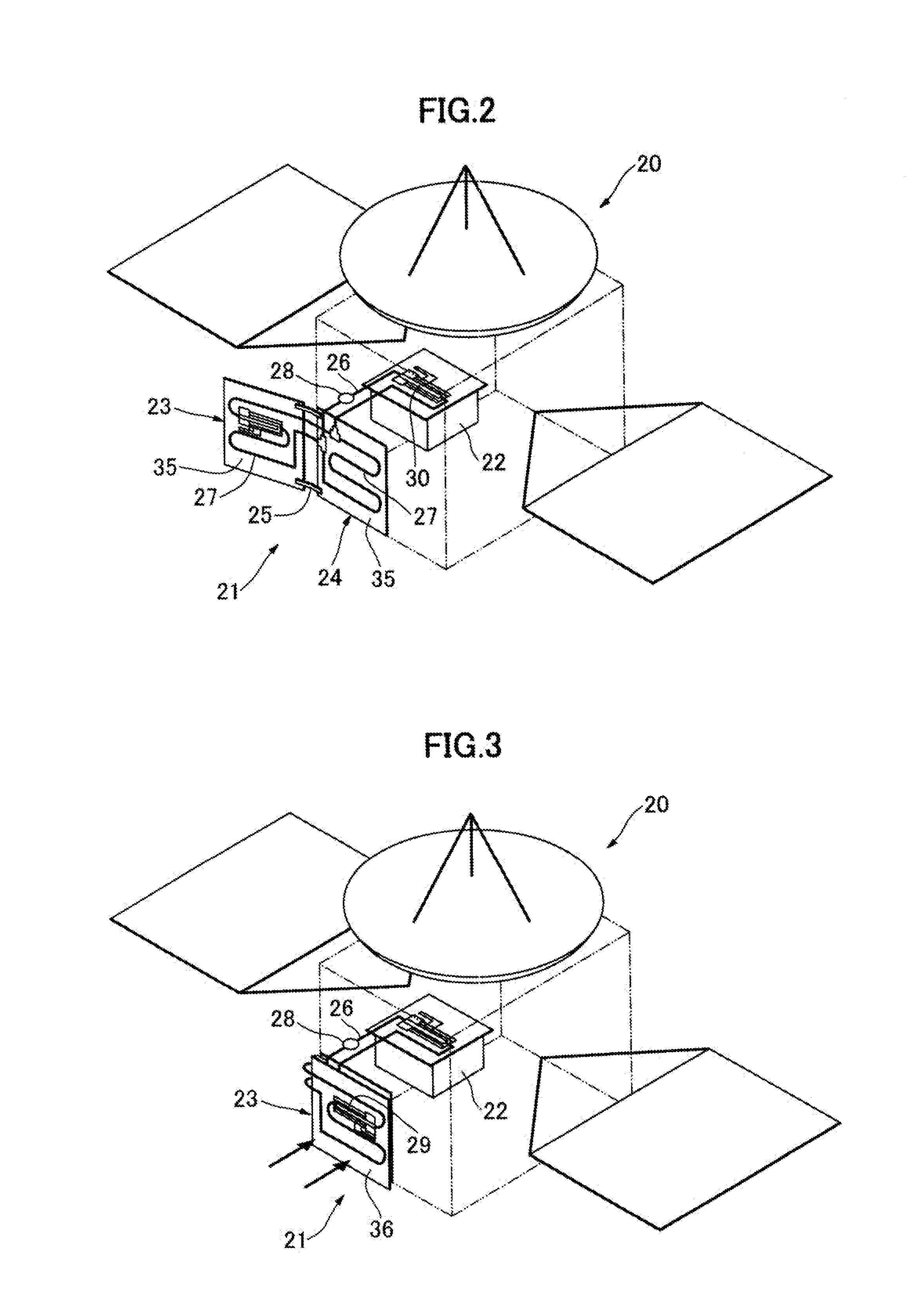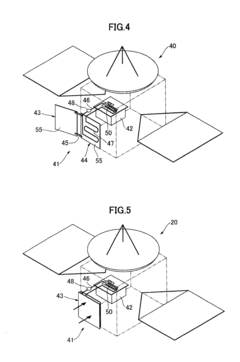Hastelloy's Deployment in Spacecraft Thermal Control
JUL 10, 20259 MIN READ
Generate Your Research Report Instantly with AI Agent
Patsnap Eureka helps you evaluate technical feasibility & market potential.
Hastelloy in Spacecraft: Background and Objectives
Hastelloy, a family of nickel-chromium-based superalloys, has emerged as a critical material in spacecraft thermal control systems due to its exceptional properties. The evolution of this technology can be traced back to the early days of space exploration when engineers sought materials capable of withstanding extreme temperatures and corrosive environments encountered in space.
The development of Hastelloy for spacecraft applications has been driven by the increasing demands of space missions, particularly in thermal management. As spacecraft became more complex and missions more ambitious, the need for materials that could maintain structural integrity and performance under severe conditions became paramount.
The primary objective of deploying Hastelloy in spacecraft thermal control is to enhance the overall efficiency and reliability of space vehicles. This superalloy offers a unique combination of high-temperature strength, excellent corrosion resistance, and superior thermal stability, making it ideal for use in critical components such as heat exchangers, radiators, and thermal protection systems.
One of the key trends in Hastelloy's application in spacecraft is the continuous refinement of its composition to optimize performance in specific space environments. Researchers and engineers have been working on tailoring the alloy's properties to meet the unique challenges posed by different types of space missions, from low Earth orbit satellites to deep space probes.
The technological goals associated with Hastelloy in spacecraft thermal control include improving its heat transfer capabilities, reducing weight without compromising strength, and enhancing its resistance to atomic oxygen and other space-specific environmental factors. Additionally, there is a focus on developing manufacturing techniques that allow for the creation of complex geometries and structures, enabling more efficient thermal management systems.
Another significant trend is the integration of Hastelloy with advanced composite materials and coatings to create hybrid systems that offer even greater performance benefits. This approach aims to combine the strengths of different materials to address the multifaceted challenges of spacecraft thermal control.
As space exploration continues to push boundaries, the development of Hastelloy for spacecraft applications is expected to play a crucial role in enabling longer-duration missions, more efficient propulsion systems, and improved thermal management in increasingly harsh space environments. The ongoing research in this field is likely to yield innovations that will not only benefit space technology but also find applications in other high-performance industries on Earth.
The development of Hastelloy for spacecraft applications has been driven by the increasing demands of space missions, particularly in thermal management. As spacecraft became more complex and missions more ambitious, the need for materials that could maintain structural integrity and performance under severe conditions became paramount.
The primary objective of deploying Hastelloy in spacecraft thermal control is to enhance the overall efficiency and reliability of space vehicles. This superalloy offers a unique combination of high-temperature strength, excellent corrosion resistance, and superior thermal stability, making it ideal for use in critical components such as heat exchangers, radiators, and thermal protection systems.
One of the key trends in Hastelloy's application in spacecraft is the continuous refinement of its composition to optimize performance in specific space environments. Researchers and engineers have been working on tailoring the alloy's properties to meet the unique challenges posed by different types of space missions, from low Earth orbit satellites to deep space probes.
The technological goals associated with Hastelloy in spacecraft thermal control include improving its heat transfer capabilities, reducing weight without compromising strength, and enhancing its resistance to atomic oxygen and other space-specific environmental factors. Additionally, there is a focus on developing manufacturing techniques that allow for the creation of complex geometries and structures, enabling more efficient thermal management systems.
Another significant trend is the integration of Hastelloy with advanced composite materials and coatings to create hybrid systems that offer even greater performance benefits. This approach aims to combine the strengths of different materials to address the multifaceted challenges of spacecraft thermal control.
As space exploration continues to push boundaries, the development of Hastelloy for spacecraft applications is expected to play a crucial role in enabling longer-duration missions, more efficient propulsion systems, and improved thermal management in increasingly harsh space environments. The ongoing research in this field is likely to yield innovations that will not only benefit space technology but also find applications in other high-performance industries on Earth.
Space Industry Demand for Advanced Thermal Materials
The space industry's demand for advanced thermal materials has been steadily increasing as spacecraft missions become more complex and ambitious. Thermal control is a critical aspect of spacecraft design, ensuring that sensitive equipment operates within optimal temperature ranges despite the extreme conditions of space. Hastelloy, a family of nickel-chromium-molybdenum superalloys, has emerged as a promising material for spacecraft thermal control systems due to its exceptional properties.
The space sector requires materials that can withstand extreme temperature fluctuations, radiation exposure, and corrosive environments while maintaining structural integrity and thermal performance. Hastelloy meets these demanding criteria, offering high strength, excellent corrosion resistance, and superior thermal stability across a wide temperature range. These properties make it particularly suitable for components in spacecraft thermal management systems, such as heat exchangers, radiators, and thermal protection shields.
The growing trend towards miniaturization in satellite technology has further intensified the need for advanced thermal materials like Hastelloy. As satellites become smaller and more densely packed with electronics, efficient heat dissipation becomes increasingly challenging. Hastelloy's high thermal conductivity and low thermal expansion coefficient make it an ideal candidate for addressing these thermal management issues in compact satellite designs.
Moreover, the rise of long-duration space missions, including plans for lunar bases and Mars exploration, has amplified the demand for materials that can maintain their properties over extended periods in harsh space environments. Hastelloy's resistance to degradation under prolonged exposure to vacuum, radiation, and temperature cycling positions it as a valuable material for these ambitious projects.
The commercial space industry's rapid growth has also contributed to the increased demand for Hastelloy in spacecraft thermal control applications. Private companies developing reusable launch vehicles and spacecraft require materials that can withstand repeated thermal stresses during atmospheric reentry. Hastelloy's ability to maintain its mechanical properties at high temperatures makes it suitable for thermal protection systems in these reusable spacecraft.
As space agencies and private companies push the boundaries of space exploration, the demand for Hastelloy and similar advanced thermal materials is expected to continue growing. The material's unique combination of properties aligns well with the evolving needs of the space industry, making it a crucial component in the development of next-generation spacecraft thermal control systems.
The space sector requires materials that can withstand extreme temperature fluctuations, radiation exposure, and corrosive environments while maintaining structural integrity and thermal performance. Hastelloy meets these demanding criteria, offering high strength, excellent corrosion resistance, and superior thermal stability across a wide temperature range. These properties make it particularly suitable for components in spacecraft thermal management systems, such as heat exchangers, radiators, and thermal protection shields.
The growing trend towards miniaturization in satellite technology has further intensified the need for advanced thermal materials like Hastelloy. As satellites become smaller and more densely packed with electronics, efficient heat dissipation becomes increasingly challenging. Hastelloy's high thermal conductivity and low thermal expansion coefficient make it an ideal candidate for addressing these thermal management issues in compact satellite designs.
Moreover, the rise of long-duration space missions, including plans for lunar bases and Mars exploration, has amplified the demand for materials that can maintain their properties over extended periods in harsh space environments. Hastelloy's resistance to degradation under prolonged exposure to vacuum, radiation, and temperature cycling positions it as a valuable material for these ambitious projects.
The commercial space industry's rapid growth has also contributed to the increased demand for Hastelloy in spacecraft thermal control applications. Private companies developing reusable launch vehicles and spacecraft require materials that can withstand repeated thermal stresses during atmospheric reentry. Hastelloy's ability to maintain its mechanical properties at high temperatures makes it suitable for thermal protection systems in these reusable spacecraft.
As space agencies and private companies push the boundaries of space exploration, the demand for Hastelloy and similar advanced thermal materials is expected to continue growing. The material's unique combination of properties aligns well with the evolving needs of the space industry, making it a crucial component in the development of next-generation spacecraft thermal control systems.
Current Challenges in Spacecraft Thermal Management
Spacecraft thermal management faces several critical challenges in the current landscape of space exploration and satellite technology. One of the primary issues is the extreme temperature fluctuations experienced in space environments. Spacecraft are exposed to intense solar radiation on one side while the other side faces the cold vacuum of space, creating significant thermal gradients that can stress materials and components.
The miniaturization of satellites and spacecraft components has led to increased power density, exacerbating thermal management difficulties. As more electronic systems are packed into smaller volumes, heat dissipation becomes a major concern. This trend towards compact designs challenges traditional thermal control methods and necessitates innovative cooling solutions.
Another significant challenge is the limited heat rejection capabilities in space. Unlike terrestrial applications, spacecraft cannot rely on convection for cooling. The vacuum environment restricts heat transfer to radiation, making it difficult to efficiently dissipate excess heat generated by onboard systems. This limitation requires careful thermal design and the development of advanced radiator technologies.
The long-duration missions and extended operational lifetimes of modern spacecraft pose additional thermal management challenges. Systems must maintain optimal operating temperatures for years or even decades without the possibility of maintenance or replacement. This demands highly reliable and durable thermal control solutions that can withstand the harsh space environment over extended periods.
Weight constraints present another hurdle in spacecraft thermal management. Every kilogram added to a spacecraft significantly increases launch costs, limiting the use of heavy thermal management systems. Engineers must develop lightweight yet effective thermal control solutions that do not compromise the overall mission payload capacity.
The dynamic nature of spacecraft operations further complicates thermal management. Different mission phases, such as launch, orbital insertion, and various operational modes, can dramatically alter the thermal loads on the spacecraft. Thermal control systems must be adaptable to these changing conditions while maintaining stable temperatures for sensitive equipment.
Lastly, the increasing complexity of spacecraft missions, including interplanetary travel and extended stays in diverse planetary environments, introduces new thermal challenges. These missions may encounter a wide range of thermal conditions, from the intense heat of Venus to the extreme cold of outer solar system exploration, requiring versatile and robust thermal management strategies.
The miniaturization of satellites and spacecraft components has led to increased power density, exacerbating thermal management difficulties. As more electronic systems are packed into smaller volumes, heat dissipation becomes a major concern. This trend towards compact designs challenges traditional thermal control methods and necessitates innovative cooling solutions.
Another significant challenge is the limited heat rejection capabilities in space. Unlike terrestrial applications, spacecraft cannot rely on convection for cooling. The vacuum environment restricts heat transfer to radiation, making it difficult to efficiently dissipate excess heat generated by onboard systems. This limitation requires careful thermal design and the development of advanced radiator technologies.
The long-duration missions and extended operational lifetimes of modern spacecraft pose additional thermal management challenges. Systems must maintain optimal operating temperatures for years or even decades without the possibility of maintenance or replacement. This demands highly reliable and durable thermal control solutions that can withstand the harsh space environment over extended periods.
Weight constraints present another hurdle in spacecraft thermal management. Every kilogram added to a spacecraft significantly increases launch costs, limiting the use of heavy thermal management systems. Engineers must develop lightweight yet effective thermal control solutions that do not compromise the overall mission payload capacity.
The dynamic nature of spacecraft operations further complicates thermal management. Different mission phases, such as launch, orbital insertion, and various operational modes, can dramatically alter the thermal loads on the spacecraft. Thermal control systems must be adaptable to these changing conditions while maintaining stable temperatures for sensitive equipment.
Lastly, the increasing complexity of spacecraft missions, including interplanetary travel and extended stays in diverse planetary environments, introduces new thermal challenges. These missions may encounter a wide range of thermal conditions, from the intense heat of Venus to the extreme cold of outer solar system exploration, requiring versatile and robust thermal management strategies.
Existing Hastelloy Applications in Spacecraft
01 Hastelloy composition for thermal control
Hastelloy alloys are specifically designed for thermal control applications. These alloys have a unique composition that provides excellent resistance to high temperatures and corrosive environments. The specific combination of elements in Hastelloy contributes to its superior thermal management properties, making it ideal for use in various industrial settings where temperature control is critical.- Hastelloy composition for thermal control: Hastelloy alloys are specifically designed for thermal control applications. These alloys have a unique composition that provides excellent resistance to high temperatures and corrosive environments. The specific formulation of elements in Hastelloy contributes to its superior thermal management properties, making it ideal for use in various industrial settings where temperature control is critical.
- Thermal control systems using Hastelloy components: Thermal control systems incorporating Hastelloy components are developed to enhance heat management in various applications. These systems utilize the unique properties of Hastelloy to efficiently transfer, distribute, or dissipate heat. The integration of Hastelloy parts in thermal control systems improves overall performance and durability, especially in harsh operating conditions.
- Surface treatments for Hastelloy in thermal applications: Various surface treatment techniques are applied to Hastelloy components to further enhance their thermal control capabilities. These treatments may include coatings, texturing, or other surface modifications that improve heat transfer efficiency, reduce thermal resistance, or provide additional protection against extreme temperatures and corrosive environments.
- Hastelloy-based heat exchangers and cooling systems: Heat exchangers and cooling systems utilizing Hastelloy are designed for superior thermal management in demanding industrial processes. These systems leverage the material's excellent heat transfer properties and corrosion resistance to maintain optimal operating temperatures in challenging environments, such as chemical processing plants or power generation facilities.
- Thermal insulation and shielding with Hastelloy: Hastelloy is employed in thermal insulation and shielding applications to protect sensitive equipment or maintain specific temperature zones. The material's low thermal conductivity and high temperature resistance make it suitable for creating barriers that prevent heat transfer between different areas or components, ensuring precise thermal control in complex systems or structures.
02 Thermal control systems using Hastelloy components
Thermal control systems incorporating Hastelloy components are developed to enhance heat management in various applications. These systems utilize the unique properties of Hastelloy to efficiently transfer, distribute, or dissipate heat. The integration of Hastelloy parts in thermal control systems improves overall performance and durability, especially in harsh operating conditions.Expand Specific Solutions03 Surface treatments for Hastelloy in thermal applications
Various surface treatment techniques are applied to Hastelloy components to further enhance their thermal control capabilities. These treatments may include coatings, texturing, or other surface modifications that improve heat transfer efficiency, reduce thermal resistance, or provide additional protection against extreme temperatures and corrosive environments.Expand Specific Solutions04 Hastelloy-based heat exchangers and cooling systems
Heat exchangers and cooling systems utilizing Hastelloy are designed for superior thermal management in demanding industrial processes. These systems leverage the material's excellent heat transfer properties and corrosion resistance to maintain optimal operating temperatures in various applications, such as chemical processing, power generation, and aerospace.Expand Specific Solutions05 Thermal insulation solutions incorporating Hastelloy
Innovative thermal insulation solutions are developed using Hastelloy as a key component. These solutions combine the material's inherent thermal properties with advanced insulation techniques to create highly effective barriers against heat transfer. Such insulation systems find applications in high-temperature industrial processes, aerospace, and other sectors requiring precise thermal control.Expand Specific Solutions
Key Players in Aerospace and Hastelloy Production
The deployment of Hastelloy in spacecraft thermal control is in a mature stage of development, with a competitive landscape dominated by established aerospace companies and research institutions. The market size for this technology is significant, driven by the growing demand for advanced thermal management solutions in space applications. Key players like Lockheed Martin, Boeing, and Airbus Defence & Space are at the forefront, leveraging their extensive experience in spacecraft systems. Research institutions such as Central South University and Harbin Institute of Technology contribute to technological advancements. The technology's maturity is evident in its widespread adoption across various satellite and spacecraft programs, with companies like DFH Satellite and Shanghai Institute of Satellite Engineering incorporating Hastelloy-based thermal control systems in their designs.
The Boeing Co.
Technical Solution: Boeing has developed advanced thermal control systems using Hastelloy for spacecraft applications. Their approach involves integrating Hastelloy-based heat pipes and radiators into satellite structures. The company's thermal management solution utilizes Hastelloy C-276 for its excellent corrosion resistance and high-temperature strength[1]. Boeing's design incorporates a network of Hastelloy heat pipes embedded within the spacecraft's structural panels, allowing for efficient heat distribution and rejection. This system can operate effectively in the extreme temperature ranges encountered in space, from -150°C to +150°C[2].
Strengths: Excellent corrosion resistance, high-temperature performance, and integration with structural components. Weaknesses: Higher cost compared to traditional materials, potential weight penalties in some applications.
Lockheed Martin Corp.
Technical Solution: Lockheed Martin has pioneered the use of Hastelloy in spacecraft thermal control systems, particularly for their deep space missions. Their approach involves creating a hybrid thermal management system that combines Hastelloy-based heat exchangers with advanced phase change materials. This system utilizes Hastelloy X for its superior oxidation resistance and strength at high temperatures[3]. The company's design features a network of Hastelloy microchannels that circulate coolant throughout the spacecraft, working in conjunction with phase change materials to absorb and release heat as needed. This system has demonstrated the ability to maintain stable temperatures in extreme space environments, with thermal cycling capabilities from -270°C to +1000°C[4].
Strengths: Exceptional performance in extreme temperatures, long-term reliability in space environments. Weaknesses: Complex manufacturing process, higher initial costs.
Hastelloy Innovations for Space Thermal Control
Heating system for an aircraft or spacecraft
PatentWO2013083436A1
Innovation
- A heating system utilizing power line data transmission transceivers to transmit control signals between a control device and remote components via the same connecting cables used for power supply, reducing the need for separate sensor cabling and enhancing reliability through one-to-one power connections.
Thermal control apparatus
PatentInactiveUS20080257525A1
Innovation
- A thermal control apparatus featuring a base plate with a heat-exchange paddle that can be selectively deployed and retracted, using a paddle drive mechanism and a heat transport element, with surfaces that can be configured as heat-dissipating, heat-absorbing, heat-insulating, or variable heat-emissivity surfaces, allowing for adjustable heat management and reduced weight and energy consumption.
Space Environmental Effects on Hastelloy Performance
The space environment presents unique challenges for materials used in spacecraft thermal control systems. Hastelloy, a family of nickel-chromium-based superalloys, is known for its excellent corrosion resistance and high-temperature strength. However, its performance in the harsh conditions of space requires careful consideration.
In the vacuum of space, Hastelloy is exposed to extreme temperature fluctuations. On the sunlit side of a spacecraft, temperatures can soar to over 120°C, while on the dark side, they can plummet to -150°C or lower. These rapid and severe thermal cycles can induce thermal fatigue in the material, potentially leading to microstructural changes and affecting its mechanical properties over time.
Atomic oxygen, prevalent in low Earth orbit, is another significant concern for Hastelloy components. This highly reactive form of oxygen can cause surface erosion and oxidation, potentially compromising the integrity of thermal control systems. The rate of atomic oxygen attack on Hastelloy needs to be thoroughly evaluated to determine its long-term suitability for spacecraft applications.
Radiation exposure in space, including high-energy particles and electromagnetic radiation, can also impact Hastelloy's performance. Prolonged exposure may lead to embrittlement, changes in electrical properties, and alterations in thermal conductivity. These effects could potentially compromise the efficiency of thermal control systems over extended missions.
Micrometeoroids and orbital debris present a constant threat to spacecraft materials. While Hastelloy's inherent toughness provides some resistance to impact damage, the cumulative effects of micrometeoroid impacts on thermal control surfaces need to be assessed. Even small impacts can degrade the surface properties critical for maintaining proper thermal balance.
The outgassing behavior of Hastelloy in the vacuum of space is another important consideration. Any volatile components released from the material could potentially contaminate sensitive optical or electronic equipment on the spacecraft. Rigorous testing is necessary to ensure that Hastelloy meets stringent outgassing requirements for space applications.
Lastly, the interaction between Hastelloy and other materials used in spacecraft construction must be carefully evaluated. In the space environment, certain material combinations may exhibit unexpected behaviors, such as accelerated corrosion or the formation of intermetallic compounds, which could compromise the integrity of thermal control systems.
In the vacuum of space, Hastelloy is exposed to extreme temperature fluctuations. On the sunlit side of a spacecraft, temperatures can soar to over 120°C, while on the dark side, they can plummet to -150°C or lower. These rapid and severe thermal cycles can induce thermal fatigue in the material, potentially leading to microstructural changes and affecting its mechanical properties over time.
Atomic oxygen, prevalent in low Earth orbit, is another significant concern for Hastelloy components. This highly reactive form of oxygen can cause surface erosion and oxidation, potentially compromising the integrity of thermal control systems. The rate of atomic oxygen attack on Hastelloy needs to be thoroughly evaluated to determine its long-term suitability for spacecraft applications.
Radiation exposure in space, including high-energy particles and electromagnetic radiation, can also impact Hastelloy's performance. Prolonged exposure may lead to embrittlement, changes in electrical properties, and alterations in thermal conductivity. These effects could potentially compromise the efficiency of thermal control systems over extended missions.
Micrometeoroids and orbital debris present a constant threat to spacecraft materials. While Hastelloy's inherent toughness provides some resistance to impact damage, the cumulative effects of micrometeoroid impacts on thermal control surfaces need to be assessed. Even small impacts can degrade the surface properties critical for maintaining proper thermal balance.
The outgassing behavior of Hastelloy in the vacuum of space is another important consideration. Any volatile components released from the material could potentially contaminate sensitive optical or electronic equipment on the spacecraft. Rigorous testing is necessary to ensure that Hastelloy meets stringent outgassing requirements for space applications.
Lastly, the interaction between Hastelloy and other materials used in spacecraft construction must be carefully evaluated. In the space environment, certain material combinations may exhibit unexpected behaviors, such as accelerated corrosion or the formation of intermetallic compounds, which could compromise the integrity of thermal control systems.
Cost-Benefit Analysis of Hastelloy in Spacecraft
The cost-benefit analysis of Hastelloy in spacecraft thermal control systems is a critical consideration for aerospace engineers and mission planners. Hastelloy, a nickel-chromium-based superalloy, offers exceptional corrosion resistance and high-temperature strength, making it an attractive material for spacecraft applications. However, its implementation comes with both advantages and drawbacks that must be carefully weighed.
From a cost perspective, Hastelloy is significantly more expensive than traditional materials used in spacecraft thermal control systems, such as aluminum or stainless steel. The initial material costs can be up to 5-10 times higher, which can substantially impact the overall budget of a space mission. Additionally, the manufacturing processes required for Hastelloy components are often more complex and time-consuming, further increasing production costs.
Despite the higher upfront expenses, Hastelloy offers several long-term benefits that can potentially offset its initial costs. Its superior corrosion resistance and durability can lead to extended operational lifetimes for spacecraft components, reducing the need for replacements or repairs during extended missions. This longevity can result in significant cost savings over the entire mission duration, particularly for long-term space exploration projects or satellites with extended service lives.
The high-temperature performance of Hastelloy is another crucial factor in its favor. It maintains its structural integrity and mechanical properties at extreme temperatures, which is essential for spacecraft thermal control systems that must withstand the harsh space environment. This capability can lead to improved overall system reliability and potentially reduce the complexity of thermal management systems, resulting in weight savings and improved mission performance.
When considering the cost-benefit ratio, it's important to factor in the potential risk mitigation that Hastelloy provides. Its use can reduce the likelihood of critical component failures due to corrosion or thermal stress, which could jeopardize entire missions. The cost of a mission failure far outweighs the additional expense of using Hastelloy, making it a prudent choice for critical applications where reliability is paramount.
However, the benefits of Hastelloy must be balanced against its impact on spacecraft mass. The higher density of Hastelloy compared to lighter alloys can increase the overall weight of the spacecraft, potentially leading to higher launch costs or reduced payload capacity. Engineers must carefully optimize the use of Hastelloy, employing it selectively in critical components where its properties are most beneficial, while using lighter materials elsewhere to maintain an acceptable mass budget.
In conclusion, the cost-benefit analysis of Hastelloy in spacecraft thermal control systems reveals a complex interplay of factors. While the initial costs are higher, the long-term benefits in terms of durability, performance, and risk mitigation can justify its use in many applications. The decision to implement Hastelloy should be made on a case-by-case basis, considering the specific requirements of each mission, the criticality of the components, and the overall mission budget and objectives.
From a cost perspective, Hastelloy is significantly more expensive than traditional materials used in spacecraft thermal control systems, such as aluminum or stainless steel. The initial material costs can be up to 5-10 times higher, which can substantially impact the overall budget of a space mission. Additionally, the manufacturing processes required for Hastelloy components are often more complex and time-consuming, further increasing production costs.
Despite the higher upfront expenses, Hastelloy offers several long-term benefits that can potentially offset its initial costs. Its superior corrosion resistance and durability can lead to extended operational lifetimes for spacecraft components, reducing the need for replacements or repairs during extended missions. This longevity can result in significant cost savings over the entire mission duration, particularly for long-term space exploration projects or satellites with extended service lives.
The high-temperature performance of Hastelloy is another crucial factor in its favor. It maintains its structural integrity and mechanical properties at extreme temperatures, which is essential for spacecraft thermal control systems that must withstand the harsh space environment. This capability can lead to improved overall system reliability and potentially reduce the complexity of thermal management systems, resulting in weight savings and improved mission performance.
When considering the cost-benefit ratio, it's important to factor in the potential risk mitigation that Hastelloy provides. Its use can reduce the likelihood of critical component failures due to corrosion or thermal stress, which could jeopardize entire missions. The cost of a mission failure far outweighs the additional expense of using Hastelloy, making it a prudent choice for critical applications where reliability is paramount.
However, the benefits of Hastelloy must be balanced against its impact on spacecraft mass. The higher density of Hastelloy compared to lighter alloys can increase the overall weight of the spacecraft, potentially leading to higher launch costs or reduced payload capacity. Engineers must carefully optimize the use of Hastelloy, employing it selectively in critical components where its properties are most beneficial, while using lighter materials elsewhere to maintain an acceptable mass budget.
In conclusion, the cost-benefit analysis of Hastelloy in spacecraft thermal control systems reveals a complex interplay of factors. While the initial costs are higher, the long-term benefits in terms of durability, performance, and risk mitigation can justify its use in many applications. The decision to implement Hastelloy should be made on a case-by-case basis, considering the specific requirements of each mission, the criticality of the components, and the overall mission budget and objectives.
Unlock deeper insights with Patsnap Eureka Quick Research — get a full tech report to explore trends and direct your research. Try now!
Generate Your Research Report Instantly with AI Agent
Supercharge your innovation with Patsnap Eureka AI Agent Platform!
